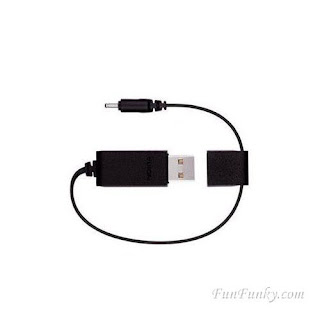We think it's pretty fair to say that the
HTC Evo 4G was one of the best and most popular Android smartphones of 2010. Now, just a little over a year later, we have its successor, the HTC Evo 3D. Introduced at
CTIA 2011, the Evo 3D will be available from Sprint starting June 24 for $199.99 with a two-year contract. The Gingerbread handset ups the ante with a dual-core processor, a larger battery, and a glasses-free 3D display and 3D image and video capture. Adding 3D to the phone runs the risk of being a gimmicky ploy, and after some time playing with the features, we found 3D use was best in small doses. Fortunately, the Evo 3D offers plenty more to keep Sprint customers happy.
Design
The HTC Evo 3D's design is updated but familiar, and anyone upgrading from the Evo 4G should feel right at home with the smartphone. At 5 inches tall by 2.6 inches wide by 0.48 inch thick and 6 ounces, the handset is roughly the same size as its predecessor. It's a good chunk of hardware, to be sure, but the Evo 3D feels narrower, so it's easier to hold and grip. It also has that high-quality construction we've come to expect from HTC, and we like the addition of the textured surface on back.
The HTC Evo 3D looks similar to its predecessor, but feels less bulky.
The phone is easy to use one-handed. As on the Evo, there are four touch-sensitive buttons below the display for the home, menu, back, and search functions. The smartphone offers both Swype and HTC's virtual keyboard for text entry. On the right side are a volume rocker, a large camera key, and a 2D/3D camera-mode switch, while a Micro-USB port sits on the left. The top of the device houses a 3.5mm headphone jack and a power button, with the front-facing 1.3-megapixel camera located just below it. On the back, you'll find the dual 5-megapixel cameras for 2D and 3D image and video capture.
The smartphone offers dual 5-megapixel cameras, which you can use to capture 2D and 3D photos and video.
Previous Evo 4G owners might notice a couple of missing features. First, there isn't a separate HDMI port on the Evo 3D; instead, you can use the Micro-USB port and an MHL adapter (not included in the box) to connect the smartphone to your HDTV. Also gone is the built-in kickstand.
The HTC Evo 3D comes packaged with an AC adapter, a USB cable, an 8GB microSD card, and reference material.
3D display
Gracing the front of the HTC Evo 3D is a 4.3-inch qHD (540x960-pixel resolution) Super LCD. The screen is beautiful in itself, showing sharp text and images with bright colors, and it offers a smoother picture than the Evo's WVGA touch screen. However, there's another level to the smartphone's display. It features a
parallax barrier that displays two different images on top of the screen, thus creating a 3D effect without the use of glasses.
It's the same technology used in the
LG Optimus 3D and
Nintendo 3DS and can be used to view 3D videos, photos, and games. To get you started, Sprint preloads the device with a full-length copy of "The Green Hornet 3D" and a demo version of Spider-Man 3D, the game. You can also view 3D videos from YouTube, as well as shoot your own 3D clips and photos using the dual 5-megapixel cameras on back of the phone. Sprint said 3D content will also be available via the preloaded Blockbuster application and the new HTC Watch video storefront.
The Evo 3D features a glasses-free 3D display and comes preloaded with some 3D games and video.
We watched a few 3D YouTube clips (the preloaded copy of "The Green Hornet" would not play on our review unit for reasons unknown) and played Spider-Man 3D. Images popped from the screen, and it definitely gave the smartphone a bit of a wow factor. However, when compared with the Nintendo 3DS, the Evo 3D has a limited depth of field. We asked Senior Editor Scott Stein, who covers gaming in addition to laptops, to take a look and he agreed that the 3DS delivers a richer experience that goes deeper into the screen, whereas the Evo 3D offers more of a popping-out effect. It felt more like we were looking at one of those 3D lenticular postcards.
You also have to view the screen pretty much dead-on, as the viewing angles for 3D are very limited. It's not a huge problem for videos since there's no need to really move the phone, but it is for games that use the phone's accelerometer as a way to control movement.
Still, it was fun to check out, and we spent more than our fair share of time playing Spider-Man 3D. A couple of times we did run into a problem in which the screen stayed in 3D mode even after we'd exited the game, so everything on screen looked doubled up until we restarted the phone. We also got a bit of a headache after a while, and, more often than not, 3D photos just made our eyes hurt. Both the sample pictures and photos we took with the camera made our eyes cross as we tried to focus on the image. Recorded video clips were much better, but again, it was more a matter of objects in the foreground popping out than a deep, immersive 3D experience.






















